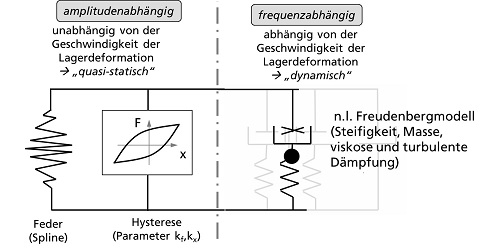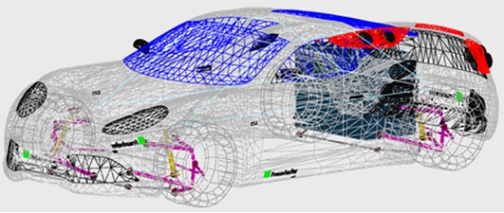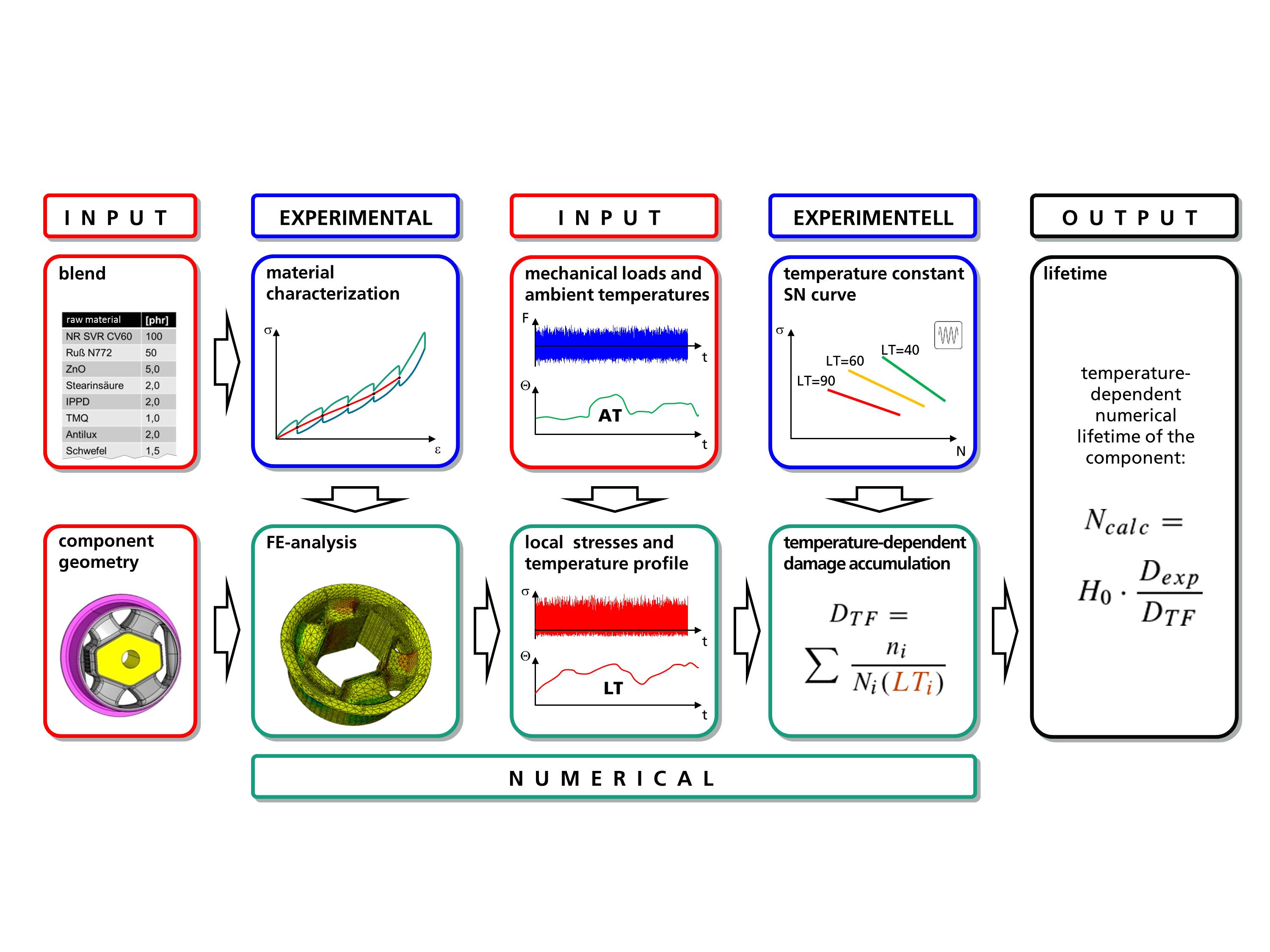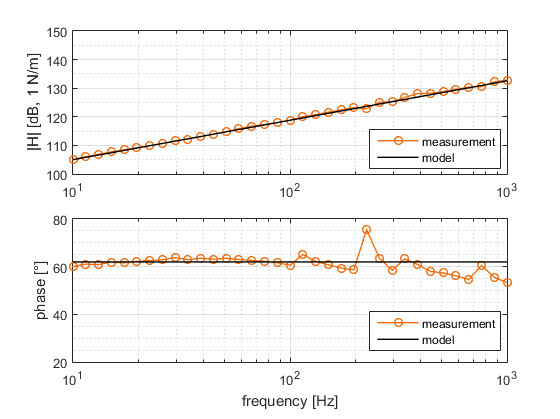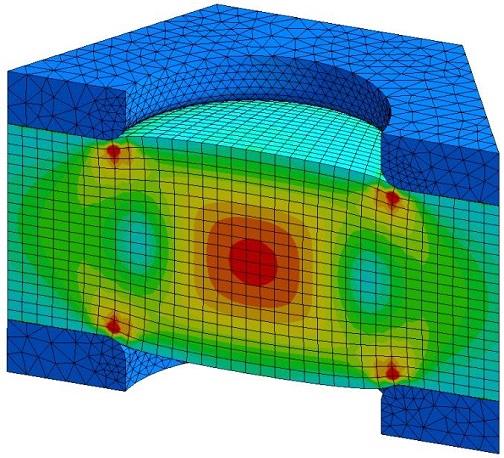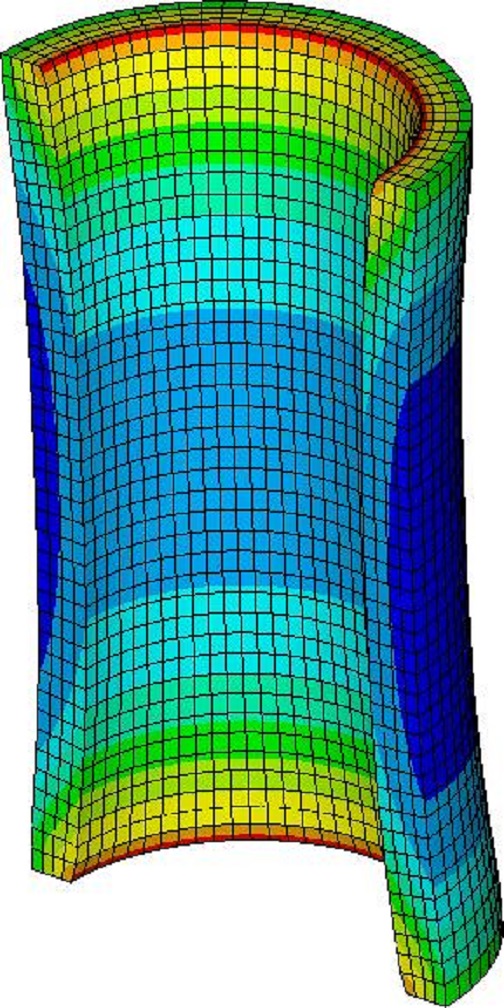Concerning the simulation of elastomeric parts, Fraunhofer LBF differentiates between system simulation and the simulation of local stresses in a part.
For a reliable simulation of the behavior of the entire system, the model must guarantee a precise depiction of the transfer behavior of the elastomeric component over the entire strain spectrum containing stress amplitudes and frequencies. Separated into the areas of application: “driving dynamics/structural durability” and “NVH” and because of the different frequency and amplitude ranges Fraunhofer LBF uses different modeling approaches and machines for the characterization.
 Fraunhofer Institute for Structural Durability and System Reliability LBF
Fraunhofer Institute for Structural Durability and System Reliability LBF